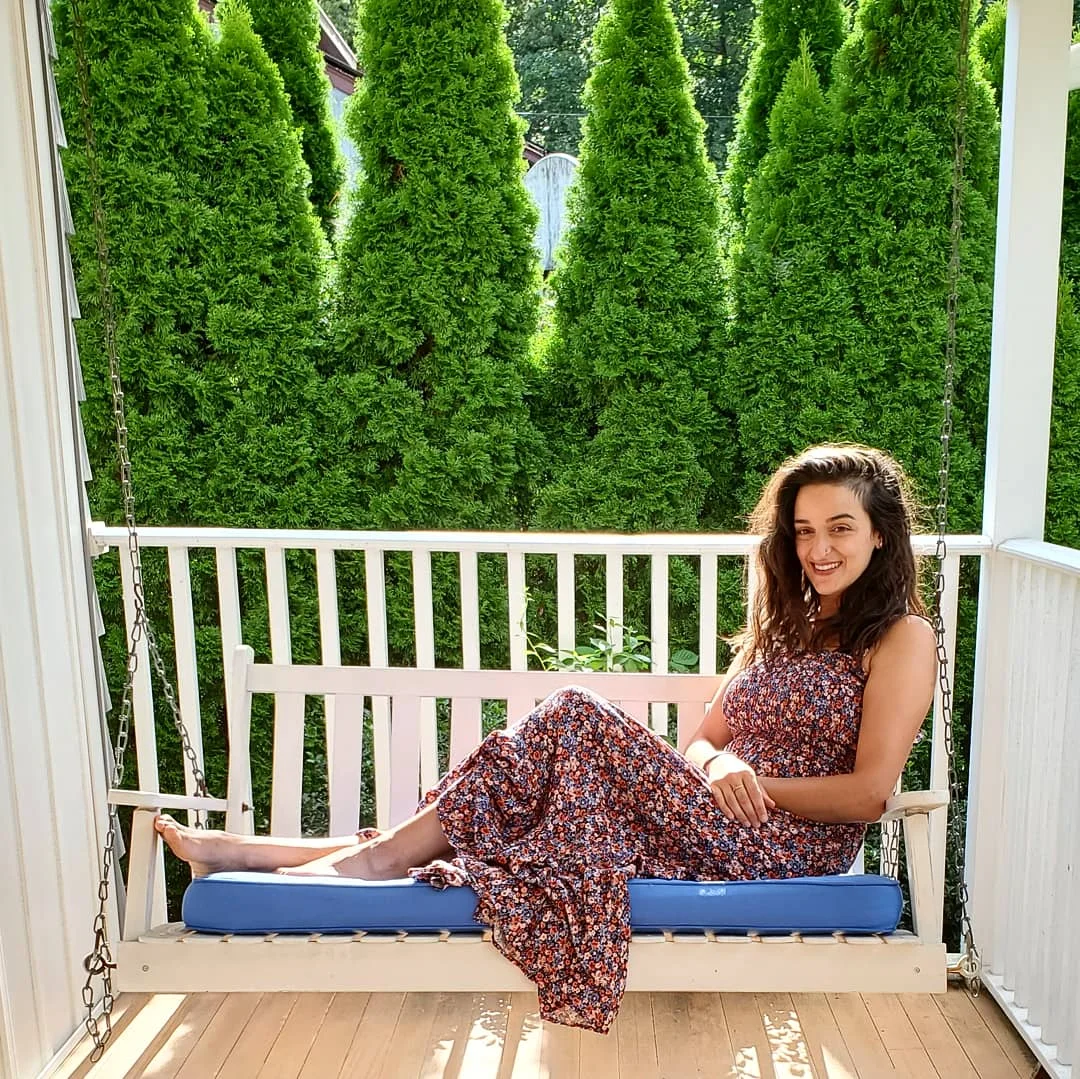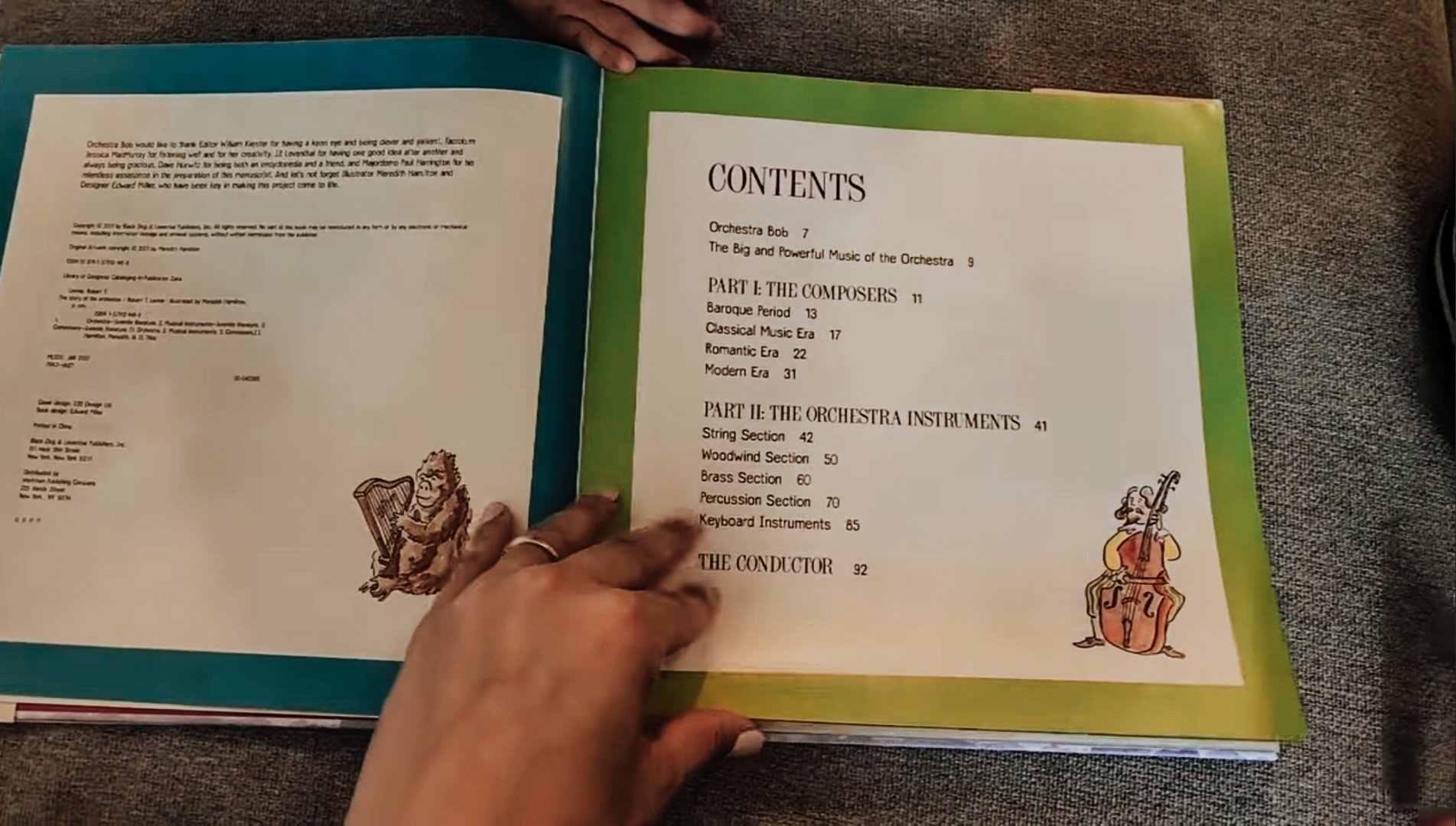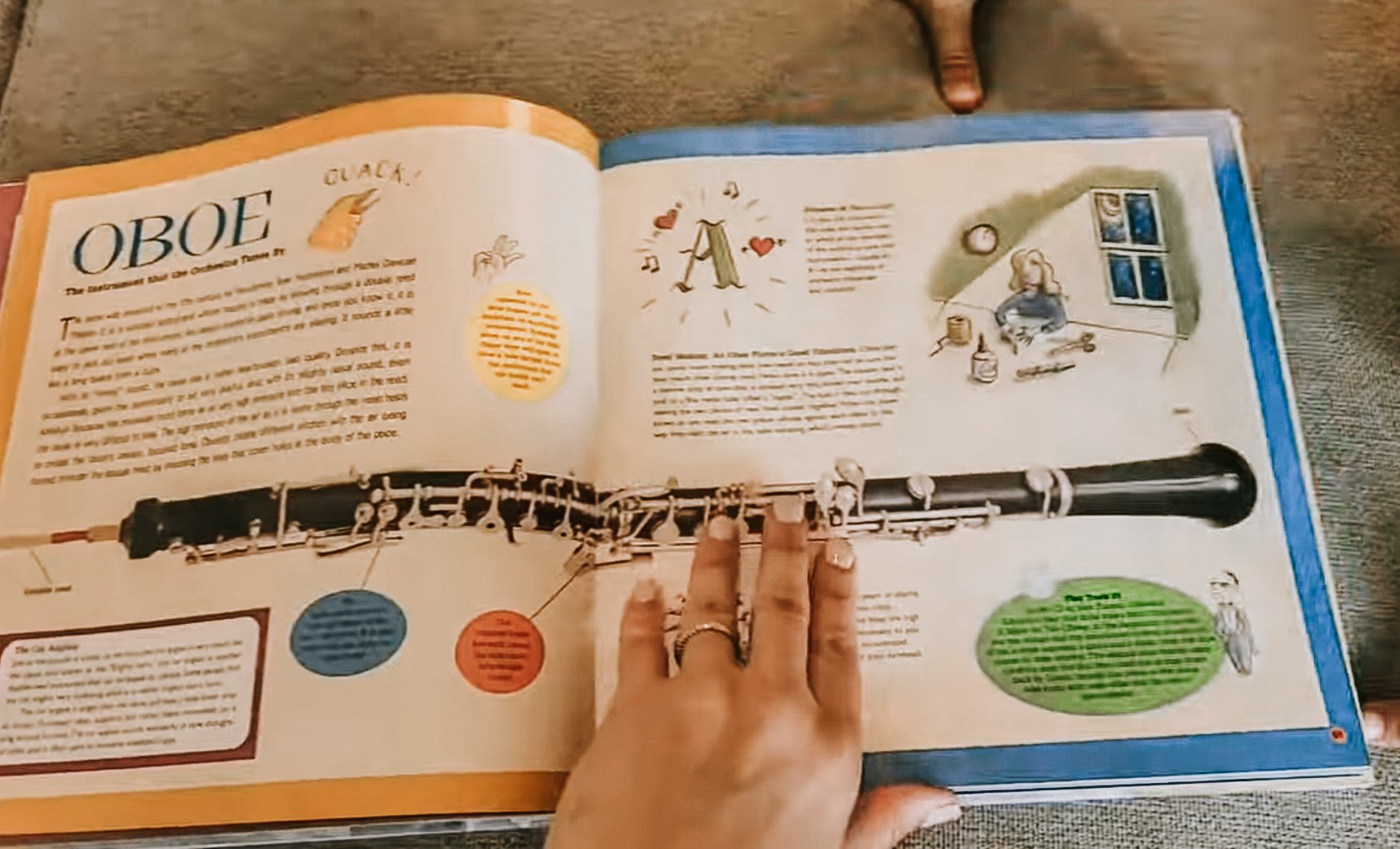Composer Study: A Simple Charlotte Mason Guide for Your Homeschool
Have you ever heard of a Composer Study? —If not, you are definitely in the right place! Today, I’m sharing how we do Composer Study (aka Music Study) in our homeschool! As an Ambleside Online homeschool family, and a mom to five young children, incorporating music studies from the beginning of our journey has provided us with much enrichment and enjoyment. I hope it does the same for you! :-)
One of the beautiful aspects of a Charlotte Mason education is its emphasis on exposing children to truth, beauty, and goodness. Composer study fits perfectly into this rhythm, helping children become familiar with beautiful music, and the lives of the composers who created them! If you want a simple way to incorporate this wonderful practice into your own homeschool week, here’s an easy-to-follow guide inspired by Charlotte Mason’s philosophy. After reading this blog post, I highly recommend watching my video on Composer Study below for more helpful visuals, and practical examples that will bring this incredible process to life! Trust me, you can do this!!
What is Composer Study?
In a Charlotte Mason education, Composer Study is the process of exposing your children to different composers, and their different musical pieces in order to give them a love and relationship with music. Rather than drilling boring facts into your child, it’s all about nurturing a sincere connection with the music. If you’ve watched my video on “How We Do Artist Study,” it’s a very similar scenario!
Step 1: Choose a Composer
Pick one composer to study per term (There are 3 terms in a school year which are about 10-12 weeks each. If you do the math, you will spend about two weeks on each musical piece). This gives your family ample time to become familiar with the style and works of that composer. Just imagine, at the end of the school year, your child will have become familiar with 18 beautiful masterpieces!
You can do whichever composer you choose for your child! If you're not sure where to start, Ambleside Online offers a very helpful Composer Study Rotation List for each upcoming year that you can find HERE.
Step 2: Choose 6 Musical Pieces by that Composer
Choose 6 key pieces that you will be studying that term. These could be symphonies, concertos, or shorter works. Don't worry about picking the “right” ones—just start somewhere! If you’re using the list from the Ambleside Online Composer Study Rotation which I use, and highly recommend, they will conveniently have 6 works for your convenience, and asterisks* to click on so you can play them directly from Youtube! I love this!
For example, you might choose to study:
6 pieces from Ludwig van Beethoven for Term 1 (10-12 weeks)
6 pieces from Claude Debussy for Term 2 (10-12 weeks)
6 pieces from Johann Sebastian Bach for Term 3 (10-12 weeks)
Step 3: Pick a Living Biography to Read on that Composer
While not essential, reading a short living biography about the composer will help add context and connection! (Stated beautifully by Simply Charlotte Mason, “Living books are usually written by one person who has a passion for the subject and writes in conversational or narrative style. Living books make the subject “come alive.” They can be contrasted to dry writing, like what is found in most encyclopedias or textbooks, which basically lists informational facts in summary form.) Although there are many options of composer books for purchasing on Amazon, you can also go to your local thrift store like I did, find an affordable book on a composer of your choice, and purchase it there! Ambleside Online has many additional classical music resources, and free e-books for each composer which you can find HERE! I personally love to use the Composer Explorer on Classic for Kids to learn more about the Composer, and the children love it too!
Above are pictures from the orchestra book I thrifted which includes different composers, their musical eras, instruments, as well as a CD to “play the musical pieces as you learn them!” (Book linked in my affiliate link below.) I believe this could be a more affordable option for anyone just starting out! To be completely honest, I’ve even gone on Wikepedia before to read about the life of the composer we were studying, or gain further knowledge about their work! You don’t get sent to the principal’s office for doing what works for you, friends! So, do what works for you! :-)
Side Note: Remember to review with your child what the child remembers about the Composer, and their musical piece, each week, prior to beginning the next lesson.
Step 4: Write Down Your Child’s Narration
After every reading about the Composer, you can then have your child do a narration to tell you what they know about what they’ve just learned. If you don’t know how to do a narration, you can learn all about it in my very practical and concise video HERE!
Upon narrating, you can use any notebook to act as your child’s composer study narration journal. However, my first year of homeschooling with the CMEC (Charlotte Mason Education Center), they suggested purchasing a “Truth Beauty Goodness” book from Riverbend Press, and I’ve never looked back! I personally love the “TBG” notebook for it’s beautifully bound cover, and how it functions as a keepsake! (It’s designed to hold all of your child’s Artist Study, Composer Study, Poetry, Hymn, and Scripture narrations.)
Depending on your child’s age, narrating can be as simple as reading a little more about the composer at the beginning of each session, and then adding a few more facts to your Truth, Beauty, Goodness notebook! ***Scroll down in this blog post to the “How We Do Composer Study” portion to see the full picture of how I document this!”***
Keep in mind: Children aren’t expected to write their own narrations until about grade 5, so mom is writing these narrations down for the child “word for word!”
Step 5: Listen to the Musical Piece, and Write Down Your Child’s Narration
Now that you’ve learned a little more about the Composer, it’s time to play the piece of the composer’s music that you will be studying that particular week! Again, ***scroll down in this blog post to the “How We Do Composer Study” portion to see the full picture of how I document this!”***
Step 6: Continue to Listen to, Discuss, and Enjoy the Music throughout the Week
Now is the extra easy part! Listen to the most recent piece you are studying throughout the week. We often play the piece during our artist study, during tea time, in the car, at the dinner table with dad, during quiet time, upon request, and more! That's it! During or after listening, you can either:
Sit quietly and enjoy it
Ask your child what they noticed, or like most about it, what’s their favorite part, tell another person about it, etc.
Encourage them to hum a part they remember
Occasionally, discuss a sentence or two about the piece, or Composer
*There’s no need for crazy analysis or formal discussion. Just consistent exposure, and occasionally sharing each other’s thoughts in a lighthearted way!
Pro tip: You can even create a playlist for each composer on Youtube so it’s easier to press play during breakfast, tea time, or quiet moments.
Step 6: Display the Composer’s Portrait in your Home
A new idea I recently discovered is to print and display a picture of the composer in your homeschool area, and write the names of the songs as you learn them around it. This helps make the composer more familiar and visually connects your child to the historical figure behind the music. I will definitely be implementing this in the future to help strengthen the connection between composer, music, and student in my lessons next year!
How We do Composer Study
Now, time for a detailed look at how we do Composer Study! We do composer study once a week, and I purposely choose our lightest homeschool day where we also choose to do our Artist Study, and then our Nature Day outside with our homeschool play group! The reason for this is with a lighter load we can better avoid rushing them through the beauty, and we really get to soak in and focus on these enriching moments. I love to give my children a warm drink, and something yummy to nibble on in order to form a more positive, and enjoyable association with learning music! (I think it’s important to add that Charlotte Mason recommends starting Composer Study at age 6 which is also when she believes a child should start school. Since I do have 4 younger children, we make composer study a family affair! I don’t expect my younger children to participate, but if they want to, they are certainly welcome!)
During our first composer study we will start the class off by:
Introducing the name of the Composer we will be studying
We then read from our living book of the Composer
I then have my child narrate back to me what they know from what I read (This helps them to become more eloquent, and to cement their thoughts.)
I write the composer’s name, the day they were born to the day they died, and the musical period they were in at the top of the page (Musical period may not mean much to them now, but noting this will help them start to become familiar with them.)
We then listen to the musical piece we are studying that week
As seen above, I have my children narrate to me their first impressions when listening to the song, and thoughts which I then write down (Even fun things like:“WOW! That loud piano part is crazy!!!” or “I hear piano!!!”)
On the coinciding page, I write the title of the song we are studying, and the date that it was written (I don’t write the title of the song on this page until after we’ve listened to the piece because I first like to have the child guess what the song might be called!)
I then ask leading questions that make a child think such as:
“What instruments do you hear?”
“If this music was playing in a movie, what do you think would be happening?”
“Does it sound like a few people are playing, or a lot of people are playing?”
“What might the name of this piece be called?”
“How does this song make you feel?”
9. Lastly, we play the music throughout the week! For us, we play the musical pieces on playdates, in the morning when we are baking, during our Artist Study, and then we have great conversations about it! (You will really fall off your chair when your children start requesting to listen to the songs you are studying all on their own!)
How to Level Up a Composer Study:
Begin exploring music theory by studying the musical terms as they organically come up (symphony, sonata, concerto, orchestra), or you can choose to study the names of the different musical instruments heard in the pieces they hear!
You can also incorporate Composer Study into other areas of education. Here are some examples:
History (What else was happening in the world when the composer lived?)
Geography (Where is the composer from?)
Artist study (What artists were from the same era?)
Pro Tip: Try to keep connections organic and interest-led, rather than turning it into a formal unit study.
How to Level Down a Composer Study:
Read only a little of the biography of the composer each class, or skip the biography altogether, and just go straight to listening to the composer’s musical piece of work itself
I hope you’ve found this inside look at how we do Composer Study in our homeschool both helpful and inspirational! Composer study is meant to be simple, beautiful, and joy-filled. It’s not about mastery—it’s about shaping a genuine love through exposure to great works of music over time. As you consistently practice it term by term, you’ll be amazed at how your children begin to recognize and appreciate classical music naturally. They may be walking down the street, and recognize the sound of a previous piece of musical work you’ve studied, or perhaps while at the library, on the T.V., etc. and it will stop them in their tracks because of the relationship they have previously formed! When those moments happen, you really know…it’s working!!! Just start with one composer, one musical piece, and one moment. That’s all it takes! I’d love if you shared this post with another fellow mama that may also fall in love with this delightful practice. It has been so valuable for us, and I pray that it adds richness to your homeschool too!

















